How to Scout Your Landscape
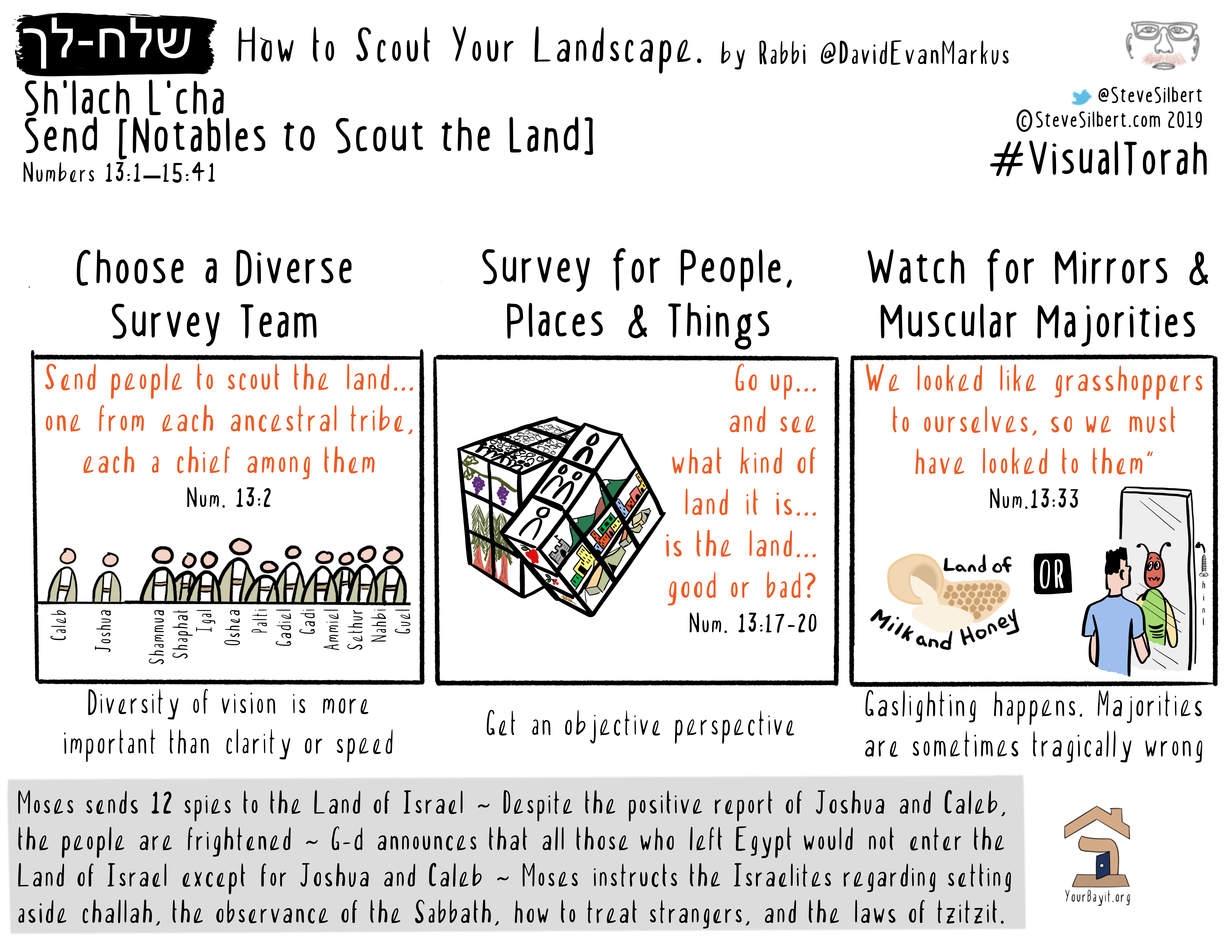
Part of a yearlong Torah series on spiritual building and builders in Jewish life.
Okay, you’re ready for spiritual building. As with a survey before building with a physical structure, first survey the landscape. How?
Parshat Shlach asks that question directly, and some of our spiritual ancestors’ first answers went tragically wrong. Their lessons – about who surveys, what we should look for, and how we handle different visions of what we see – are lessons that most of us need to keep re-learning, because we tend to keep repeating their mistakes.
Step One: Choose A Diverse Survey Team
As they approached to build their future in a new land, Torah instructed: “Send people to scout the land… one from each ancestral tribe, each a chief among them” (Num. 13:2).
With these words, Torah confirms that before building anything, first we must survey the landscape. But how? Torah’s answers: don’t do it alone but with a team representing each key stakeholder– and make sure all your fellow scouts are leaders.
Torah’s answers are good politics. Each constituency then can feel itself represented with an “equal” say (Nachmanides, Num. 13:2). That’s also why the High Priest wore all 12 tribes’ names engraved on the ritual shoulder piece (Ex. 28:9-11) – so all the tribes would see themselves equally reflected in their spiritual leader.
Torah’s answers also are challenging. Why invite multiple visions of the survey? Torah teaches that at this survey stage, diversity of vision and even conflicting vision can be more important than clarity or speed. And why all “chiefs,” each accustomed to having their perspectives honored? So all views might be heard and none so easily dismissed.
Spiritual builders, take note. Don’t rush this survey stage: far more important than speed are diversity and equality. Before building anything, harness many perspectives and make sure that none of them gets more or less weight.
Step Two: Survey for People, Places and Things
Moses charged the survey team: “Go up … and see what kind of land it is. Are people dwelling there strong or weak, few or many? Is the land … good or bad? Are the towns where they live open or walled? Is the soil rich or infertile? Is it wooded or not? And bring back some of the fruit of the land” (Num. 13:17-20).
Go up: literally. Get perspective. Rise above the landscape: don’t yet become a part of it so you risk losing objectivity.
Once you’re there, first see the people. Whatever landscape you imagine for your building venture, first see the people – folks already there, and the folks you hope to serve in the future. People first.
Next, see the landscape. Is anything walled against change, or is it relatively open to transformation? How about the figurative soil: what might it support? What’s already growing? Does the existing context allow clear lines of sight, or is the existing context wooded or brambled in ways that obscure vision? These survey questions are vital, lest you build the wrong thing in the wrong place or in the wrong way.
Only after deeply seeing people and context might things matter. Then survey what the “fruit of the land” might be – the stuff you’d create.. That’s why people and context must come first: so that what you build will best serve people and place.
Step Three: Watch Out for Mirrors and Muscular Majorities
Torah’s survey team returned with good news: the land “flowed with milk and honey” (Num. 13:27). But a large majority also brought bad news: the natives were huge and towns were fortified – and the scouts quickly told the whole community (Num. 13:32). “We looked like grasshoppers to ourselves, so we must have looked to them” (Num. 13:33). The people lost hope of building any future (Num. 14:1-4).
A minority of two on the survey team, however, saw something different. Rather than hear them, the majority threatened to pelt them with stones (Num. 14:10), so God sent everyone to wander 40 years in the desert (Num. 14:21-23). None would enter the land and build a future there, except the two silenced scouts.
This story reminds that “chiefs” risk seeing themselves into the landscape, and us too. if we feel small like “grasshoppers,” we might project our self-vision on most everything. Just as surveyors mustn’t see through rose-colored glasses, we also mustn’t be content to see mainly our own fears: nothing real gets built that way. That’s one reason that diverse survey teams are key – so that our vision isn’t merely a mirror of ourselves.
Of course, diversity is easier said than done. Torah’s survey team was a group of “chiefs” so that all might be heard, but the majority still silenced the minority and even threatened to kill them. The modern equivalent might be undermining, distancing or gaslighting people who see differently. Instead, make sure to fully hear and honor minority views before forming impressions or making decisions. Again, people first.
Jewish tradition to honor the minority view is especially critical at this stage. As Torah’s survey story teaches, majorities sometimes are tragically wrong. A muscular majority’s groupthink can be so powerful that it blinds a whole build team, even a whole nation. Try to survey the landscape that way, and you might end up wandering the desert.
Instead, design your survey team for smarts – for stakeholder buy-in and real diversity. Design your survey to see people first, then context, then things. Hear from everyone fully and safely: silence nobody and reject no vision outright. Use disagreement to clarify if reported vision reflects more a mirror than a truly accurate survey.
Do that and you’ll get a real survey of people, places and things that will support your building. Then you can wisely build the future – and make a “land flowing with milk and honey” truly your own.


By Rabbi David Markus. Sketchnote by Steve Silbert.

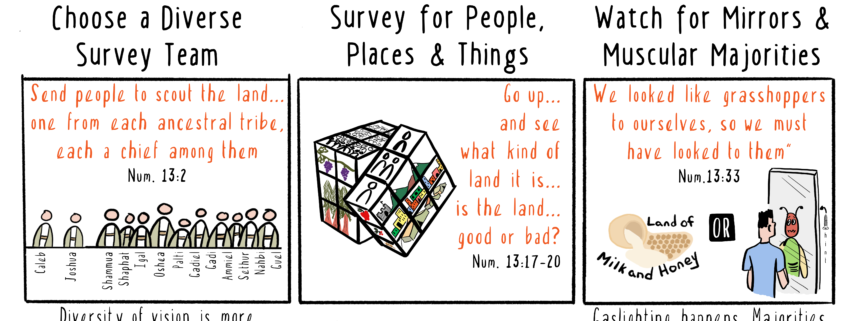
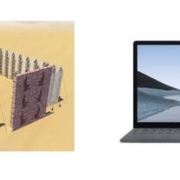
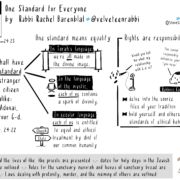
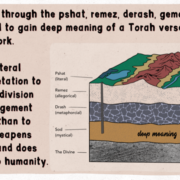
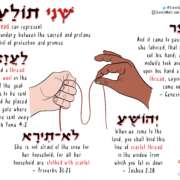
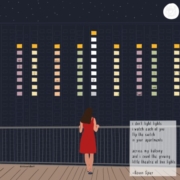
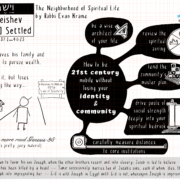


Trackbacks & Pingbacks
[…] Here’s Torah commentary at Builders Blog (a project of Bayit: Building Jewish), this week written by Rabbi David Markus and sketchnoted as always by Steve Silbert: How to Scout Your Landscape. […]
Comments are closed.